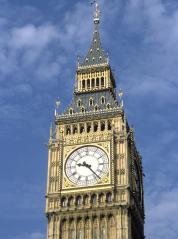Six years on from the devastation of the fire, London boroughs are committed to learning the lessons of this horrific event. The debate is an opportunity to raise the important lessons of this tragedy, the steps needed to ensure all tenants are safe and feel safe in their home, whilst also highlighting the scale of the challenge for London in meeting building and fire safety regulations.
Ensuring that fire and building safety measures are in place for both social and private tenants is a national priority. The Grenfell Tower disaster in June 2017 tragically highlighted a pervasive and systemic failure in the building safety regime, particularly (but not only) with regard to flammable cladding and external wall systems. This led to a national programme to oversee the remediation of fire safety defects and the recasting of the fire and building safety regime to try and make it fit for purpose.
Challenges facing London boroughs
67 per cent of all High-Rise Residential Buildings (+18 meters) across the UK are situated in London, and the London local authority managed housing stock is more likely to be older, densified, and found in flatted blocks rather than houses. Boroughs face multiple pressures beyond building safety such as the need to raise standards, meet net zero targets and supply new affordable homes. Housing Revenue Accounts (HRA) in London are under significant strain: the government’s 7% ceiling on social rent increases in 2023/24 is estimated to have a £598 million impact on London borough HRA finances over the next five financial years (compared to the CPI+1% formula). This exacerbated the impact of the four-year annual 1% rent reduction policy in place from 2016/17, which by 2021/22 left London rents an estimated £459 million lower than expected.
London boroughs’ role in ensuring the safety of social housing
London boroughs are committed to delivering their central responsibilities in remediating building safety issues and preventing future building safety risks. In their roles as developers, landlords, and building control, they are committed to providing safe, high quality, affordable homes. There are measures however that government could take to better support councils in delivering on this.
Our asks of the government
- There is currently a lack of clarity regarding new requirements under the Building Safety Act relating to the requirement for local authorities to register HRRBs and submit building safety case reports that identifies major fire and structural hazards of buildings and outlines how councils are managing the risks. This uncertainty is leading London boroughs to commit unbudgeted resources to prepare for requirements on a `best guess basis’.
- Boroughs urgently need concrete detailed guidance on building safety case requirements, and clarity on what the inspection and assurance framework will look like.
- There is an urgent need for an updated transition plan, setting out clear and reasonable timelines for the implementation and satisfaction of new standards.
- Local authority Building Control Teams are at the forefront of new responsibilities relating to HRRBs, including the formation of the Building Safety Regulator’s `multi-disciplinary teams (MDTs)’ that comes into force imminently. These teams will be responsible for regulating buildings, as well as helping to assess the certification of existing HRRBs and will require Building Control teams to meet new competencies and qualifications. London local authorities are deeply concerned about meeting their obligations given the long-term erosion of building control capacity in terms of resource and expertise. Further, clear guidance on how the hubs will work is yet to be provided.
- Government must work with local authorities to ensure Building Control Teams are sufficiently resourced and enabled to meet new obligations to ensure resident safety.
- London borough Building Control Teams urgently require clarity and guidance on their roles within the `multi-disciplinary hub’, to ensure it is implemented effectively.
- London borough resources and capacity are stretched to the limits as a result of financial pressures on the HRA and a lack of sufficiently qualified staff to deliver on these functions. Councils are being expected to deliver more capital works – from decarbonisation through to the anticipated revised Decent Homes Standard – with less resources available to than would have been expected when HRA finances were devolved to councils in 2012. In five of the eleven years since self-financing, central government has imposed significantly below inflation rent policies on councils and HRA reserves are severely depleted.
- London boroughs urgently need more funding and greater financial flexibility, in order to meet fire and building safety requirements, at the same time as raising the standards of tenants’ homes, meeting new Consumer Standards and delivering new affordable housing. This should include allowing a rent catch up period, so that social housing providers can gradually recover some of reduced financial investment available as a result of the 7% rent ceiling. A post-2025 rent settlement that provides sufficient funding and certainty is also needed, and London Councils encourages government to launch a consultation at the earliest opportunity.
- Specifically, Government should recognise and unlock barriers faced by boroughs attempting to access and make best use of remediation funding, to realise intended outcomes for residents. For example, local authorities only receive remediation funding for external cladding works, not other corrective fire and building safety works revealed by surveys. Further, local authorities can only access the BSF to recoup money they would otherwise have billed to leaseholders.

